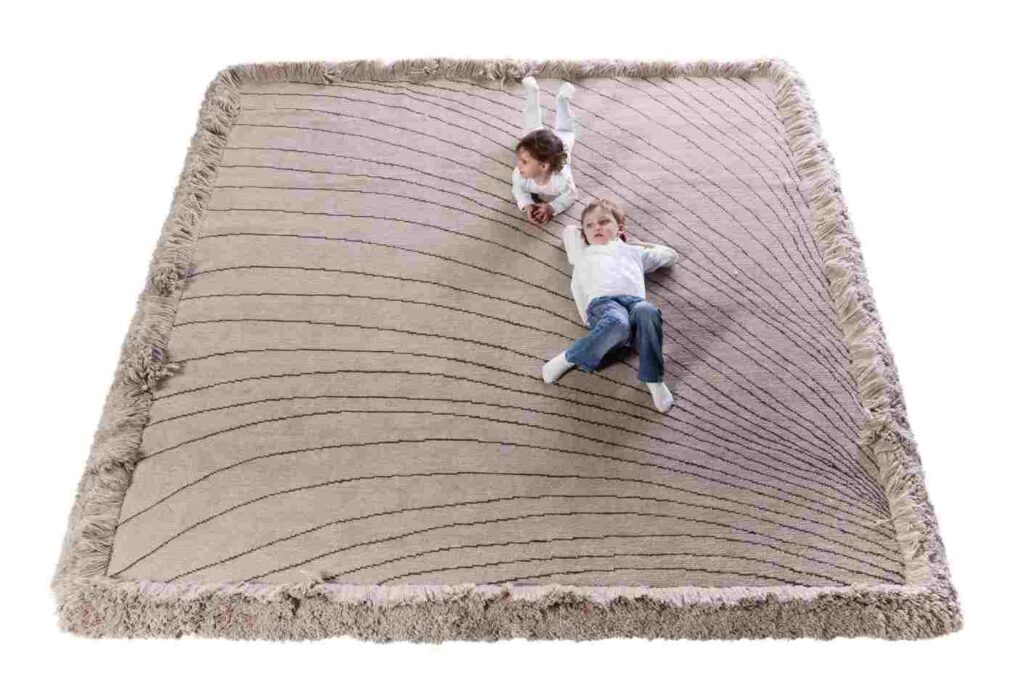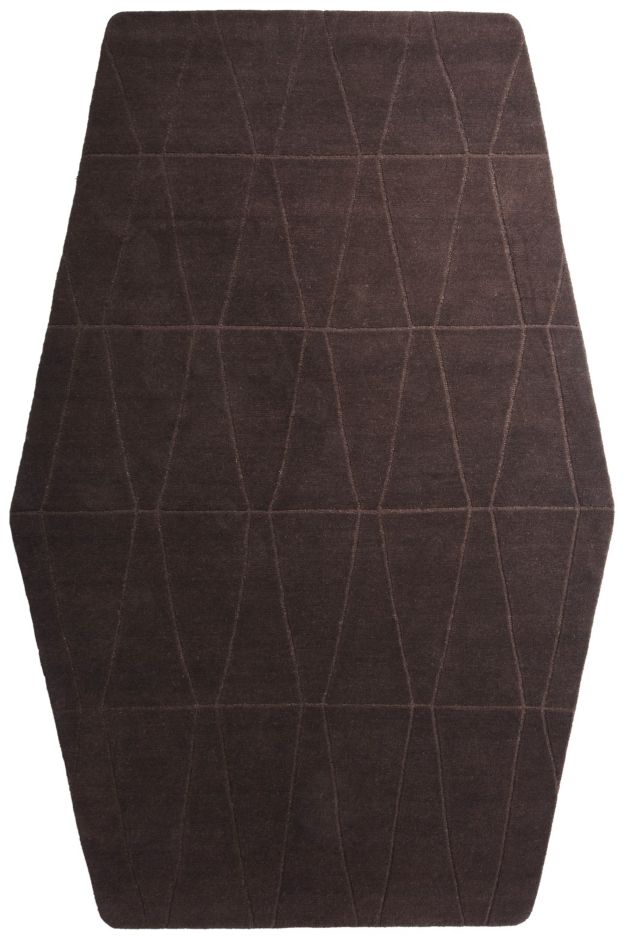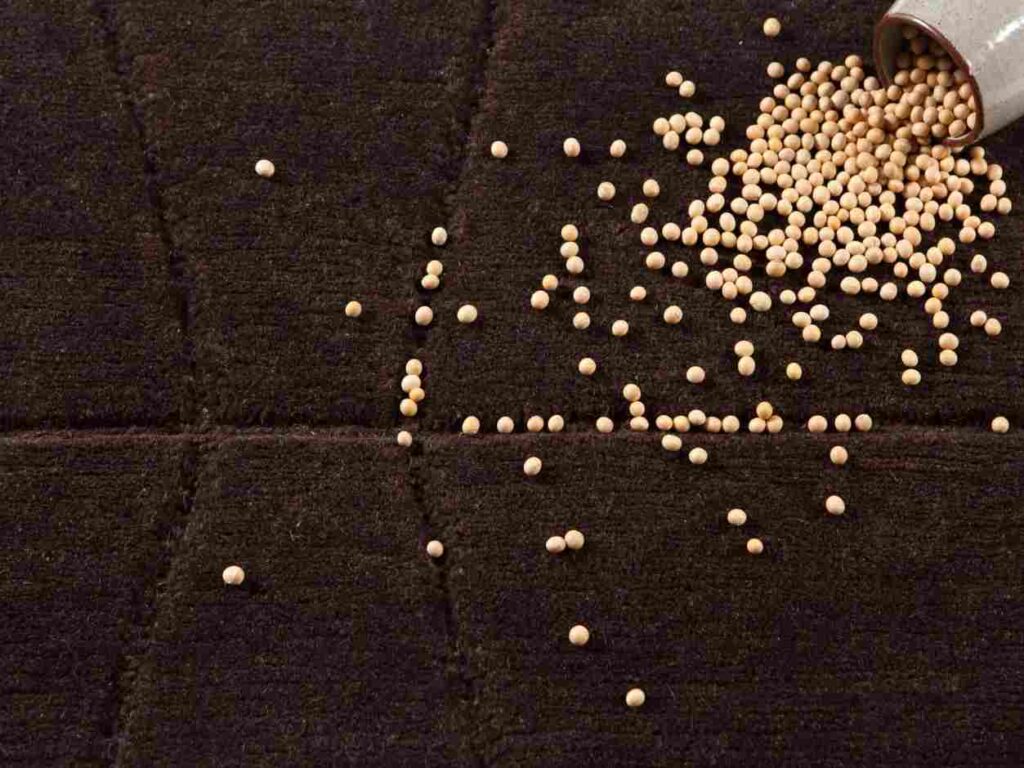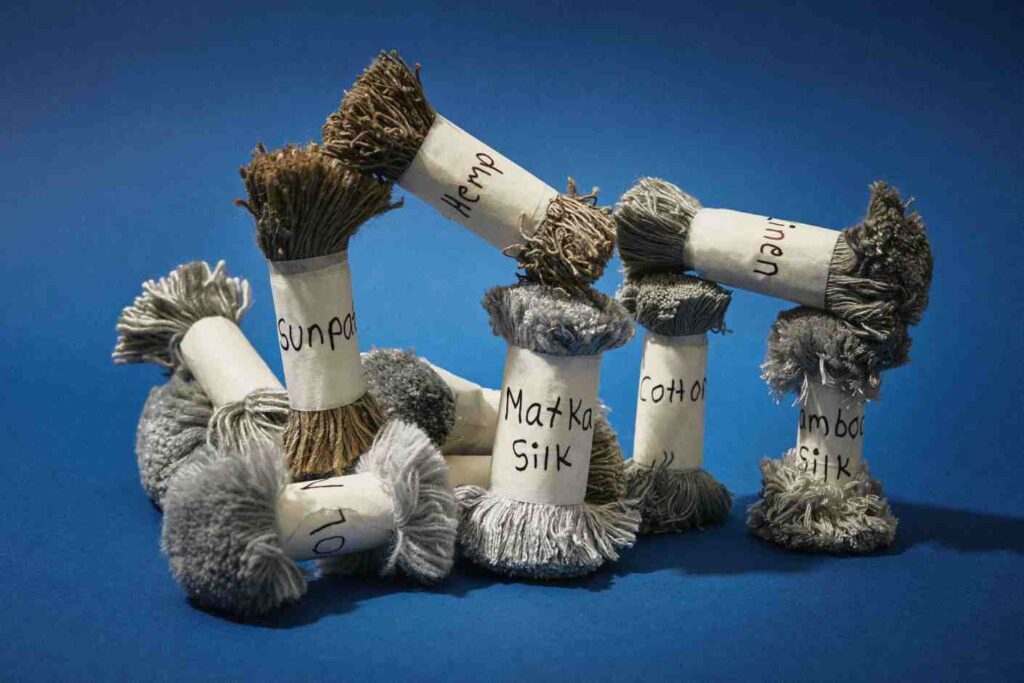Sustainability in luxury interiors: the role of sustainable rugs in responsible design
Luxury rugs — Materials and techniques — Nov 24.2025
Sustainability in luxury interiors is no longer a niche option. Today, it is a cultural, ethical and economic imperative. It is something that is redefining the very concept of luxury.
In fact, what only a decade ago might have seemed a contradiction in terms (luxury and sustainability) is now recognised as a compatible combination. What’s more, it is a necessary combination!
As a result, contemporary luxury is no longer measured solely in terms of rarity, the quality of materials or the signature of famous designers, but also in the ability to combine aesthetic and functional excellence with environmental responsibility, ethical production and social impact.
This transformation, which also affects luxury carpets (https://www.nodusrug.it/blog/tappeti-di-lusso/), is not motivated by mere marketing strategies. Rather, it reflects a profound change in the values of younger and wealthier generations, who reject mindless consumption and demand transparency, traceability and alignment of their purchases with their principles.
The best sustainable carpets?
Discover the Nodus catalogue.

The new paradigm of contemporary luxury: when luxury rugs meet responsibility
In the world of luxury carpets, there has been a silent but evident revolution. Carpets, which for centuries have been a symbol of status and wealth but often produced in questionable conditions, are emblems of a new conscious luxury.
What does this mean? Sustainability in luxury interiors applied to carpets now encompasses multiple dimensions. These range from the selection of renewable, organic and low environmental impact materials to the adoption of production processes that preserve traditional craftsmanship and guarantee decent working conditions and fair wages. It ranges from the use of natural dyes with low chemical impact to designs for extreme durability, which reduces the need for frequent replacements. It ranges from minimising the carbon footprint (through shorter supply chains) to the possibility of recycling, with a view to a circular economy.
For architects working on high-end projects, understanding sustainability in luxury interiors as it relates to carpets is no longer an option. It is, in fact, an essential skill. On the other hand, sophisticated clients are increasingly demanding detailed specifications on the sustainability of every element of the interior design project.
For example, they may ask for documentation on the production chain. They may ask for proof of the absence of child labour. They may ask for guarantees on the origin of materials. For an architect who is not prepared to answer such questions, the risk is losing professional credibility and business opportunities with a clientele that represents a growing market segment.
The luxury hotel sector has also embraced this trend. Many hotel chains already make sustainability a pillar of their brand identity. This is reflected in strict specifications for all interior elements, including carpets. Various certifications include stringent criteria on the sustainability of materials, prompting architects and designers to select suppliers who can document their environmental and ethical credentials. In such a context, the ability to present carpets that meet these standards becomes a sine qua non requirement.
In short: sustainability in luxury interiors requires sustainable carpets (https://www.nodusrug.it/blog/tappeti-sostenibili/) that are truly sustainable. It requires pieces that have been designed to last for decades, to age gracefully, developing a patina of wear that enhances their charm. It requires textiles that can be repaired rather than replaced. This philosophy of longevity is fully sustainable: a carpet that lasts thirty years has a much lower environmental impact than cheap carpets, which need to be replaced every few years.
Do you need one or more sustainable carpets?
Discover the Nodus catalogue.

What sustainable materials are used in luxury rugs?
When it comes to sustainability in luxury interiors with regard to carpets, the question of materials is complex. The raw material is the physical basis of the carpet and determines its environmental impact, from the production phase to final disposal. The good news is that the world of luxury carpets has access to a wide range of sustainable materials, many of which offer superior performance compared to synthetic alternatives. So let’s take a look at the most commonly used materials for making eco-friendly carpets (https://www.nodusrug.it/blog/tappeti-ecologici/).
Wool is perhaps the most sustainable material for high-quality carpets. Why is this? It is a totally renewable resource: sheep produce wool continuously and shearing is necessary for their well-being. Wool is also biodegradable and decomposes once in the soil, releasing nutrients rather than toxic substances. It also has technical properties: it is fireproof, stain-resistant (thanks to lanolin) and capable of recovering from compression. It is also thermoregulatory, contributing to environmental comfort.
However, not all wool is equivalent in terms of sustainability. For example, New Zealand wool, prized for its softness and durability, comes from farms that follow some of the highest animal welfare standards in the world, with sheep raised on pasture in natural conditions. In particular, certification guarantees sustainable practices that consider animal welfare, environmental impact and worker conditions.
Certified organic wool represents a further evolution in sustainability in luxury interiors. It comes from sheep raised according to the principles of organic farming: pastures not treated with pesticides or chemical fertilisers, no use of antibiotics, and complete traceability. Specifically, carpets made from organic wool represent the pinnacle of sustainability in the traditional natural materials segment.

Silk, the precious material par excellence in luxury carpets, raises more complex sustainability issues. In fact, traditional sericulture can only be sustainable when practised on a small scale using traditional methods, but producers must bear in mind that production requires a lot of water resources.
Bamboo is another sustainable material for luxury carpets. It grows rapidly, without the need for artificial irrigation, pesticides or fertilisers, regenerating on its own after harvesting. Bamboo can be processed into textile fibre (bamboo viscose or bamboo silk), which has a silk-like sheen and is very soft, as well as having natural antibacterial properties.
However, the sustainability of bamboo depends on the processing method: aggressive chemical methods can negate the environmental benefits of the raw material. Hemp and linen are two natural fibres that are gaining increasing attention in the world of sustainable carpets. Hemp is truly remarkable: it grows quickly, enriches the soil rather than depleting it, requires very little water and no pesticides, and absorbs significant amounts of CO2 during growth.
But that’s not all: hemp fibres are durable and become softer with use and washing.
Flax shares many of the positive characteristics of hemp. Both materials, historically used for rustic products, are finding new applications in contemporary luxury carpets, thanks to innovative processing techniques that enhance their aesthetic qualities while maintaining their intrinsic sustainability.
Then there are recycled fibres, which represent an innovative frontier. Some manufacturers are experimenting with carpets made from recycled materials: PET bottles transformed into fibres that can be processed like synthetic wool, fishing nets recovered from the oceans, and industrial textile waste that is reworked into new fibres. These materials are not natural in the traditional sense, but their environmental impact is equal to that of virgin fibres, if only because they remove waste from the environment. Especially for commercial projects, where extreme durability is a priority, these high-tech materials can be smart sustainable choices.
The issue of dyes is equally critical to sustainability in luxury interiors. Conventional synthetic dyes can contain heavy metals, formaldehyde or other toxic substances. In addition, industrial dyeing processes generate polluting wastewater. Sustainable alternatives include natural dyes extracted from plants, minerals and insects (indigo, madder, cochineal, gallnut, turmeric). All these substances have been used for thousands of years and produce colours of extraordinary beauty. An alternative is low-impact synthetic dyes, which guarantee the absence of toxic substances and dyeing processes with adequate wastewater treatment.
The best sustainable carpets?
Discover the Nodus catalogue.

Sustainability in luxury interiors is also a matter of ethical production processes and certifications
Sustainability in luxury interiors is not only an environmental issue, but also a social and ethical one. In fact, luxury carpets are handcrafted products that require hundreds of hours of skilled manual labour. Who does this work, under what conditions, for what pay and with what prospects? All these questions are central to a proper assessment of sustainability.
After all, the carpet industry has suffered from serious problems in the past, including child labour, precarious working conditions and inadequate remuneration for highly skilled artisans. Contemporary sustainable luxury requires a paradigm shift.
Ethical carpet production begins with the enhancement of artisan communities. Many of the most beautiful luxury carpets are produced in Nepal, India, Pakistan, Morocco and Turkey, regions with millennia-old weaving traditions. Sustainability in luxury interiors requires that these traditions be preserved, and this is only possible if artisans can earn dignity from their craft. Ethically responsible manufacturers therefore pay fair wages that exceed local minimums, provide safe and comfortable working environments, adhere to reasonable working hours, and provide health insurance and pension plans.
The abolition of child labour is a non-negotiable requirement. Certifications such as GoodWeave guarantee that no children have been involved in production. How do they certify this? Through regular inspections of manufacturers, traceability of looms and investment in educational programmes for artisans’ children. On the other hand, no customer wants to discover that the magnificent carpets in their home or hotel have been created under exploitative conditions.

Gender equality is another dimension of social sustainability. In many traditional textile cultures, weaving is mostly practised by women. The most progressive manufacturers see this as an opportunity for women’s economic empowerment, but also provide them with career opportunities, supervisory roles and ongoing training. Some organisations, such as Women in Informal Employment Globalising and Organising, work to improve the conditions of weavers with a view to social justice.
Preserving craft skills is in itself a form of cultural sustainability. Many traditional knotting, dyeing and finishing techniques are at risk of extinction because the younger generation does not see the economic value in learning these crafts. However, there are manufacturers who invest in apprenticeship programmes, creating career paths for young artisans. For more sophisticated customers, knowing that their carpet was made by a master craftsman trained by a previous master, in a chain that stretches back generations, adds great value.
In short, certifications provide verifiable guarantees of compliance with ethical standards. In addition to GoodWeave, other relevant certifications include Fair Trade Certified, which guarantees fair trade with community premiums reinvested in social projects. Then there is SA8000, an international standard for decent working conditions, and B Corporation, a certification that assesses a company’s overall social and environmental impact. These certifications are not self-declared: they require independent and regular audits.
In short, supply chain transparency is essential for sustainability in luxury interiors. Truly ethical manufacturers are willing to show where and how they work. Some organise visits for architects and designers, allowing them to see working conditions, talk to craftsmen and understand processes. Such transparency builds trust and allows architects to tell their clients: ‘This carpet was woven by a cooperative of women in Nepal who receive fair wages and whose children attend schools supported by the manufacturer.’
Do you need sustainable carpets?
Discover the Nodus catalogue.

What is the role of the architect in choosing sustainable rugs for luxury interiors?
Architects occupy an important position in promoting sustainability in luxury interiors. As professionals who guide product choices for high-profile projects, they have the power to direct demand towards sustainable suppliers, educate clients about the values of sustainability, and demonstrate that luxury and ethics are complementary.
This role brings with it responsibilities but also opportunities. The concept phase is the time when sustainability should be integrated as a founding principle, not as an afterthought. In practice? When an architect presents the early stages of a project to a client, including sustainability from the outset establishes that it is not an expensive extra but a value. When it comes to carpets, this means presenting options that excel both aesthetically and in terms of sustainable credentials, demonstrating that there is no need to choose between beauty and responsibility. The ability to present case studies of projects where sustainable carpets have already contributed to the overall quality of the interiors reinforces the message.
What else can be said about sustainability in luxury interiors, especially when it comes to carpets? Customer education is, in fact, an integral part of the process. Many customers, even those who are sustainability-conscious, have not usually considered the environmental and ethical impact of carpets. An architect who points out the differences between carpets produced industrially without attention to sustainability and carpets with verified credentials helps customers make informed choices.
This education can also make use of visual tools! For example, showing the tactile difference between synthetic wool and organic wool, presenting photographic documentation of the manufacturing process, sharing the stories of the artisans, and so on.
Nodus creates artistic carpets.
Bring luxury into your home!
>>> CONTACT US! <<<

Nodus has reinvented the luxury carpet. It was the first brand to propose the concept of the carpet as a work of contemporary art. Nodus has always created exclusive products that furnish the most beautiful homes in the world.
Would you like to make your home as unique as a work of art? Bring a hand-knotted rug of the highest quality and design into your everyday life! Give your family and loved ones the beauty of a dream masterpiece!
Each Nodus piece is designed by famous designers, making it recognisable and prestigious. This means that every carpet is unique: you will not find another one like it. Like all beautiful and one-of-a-kind items, a piece from the Nodus collection sets you apart and speaks to others about your taste and refinement.